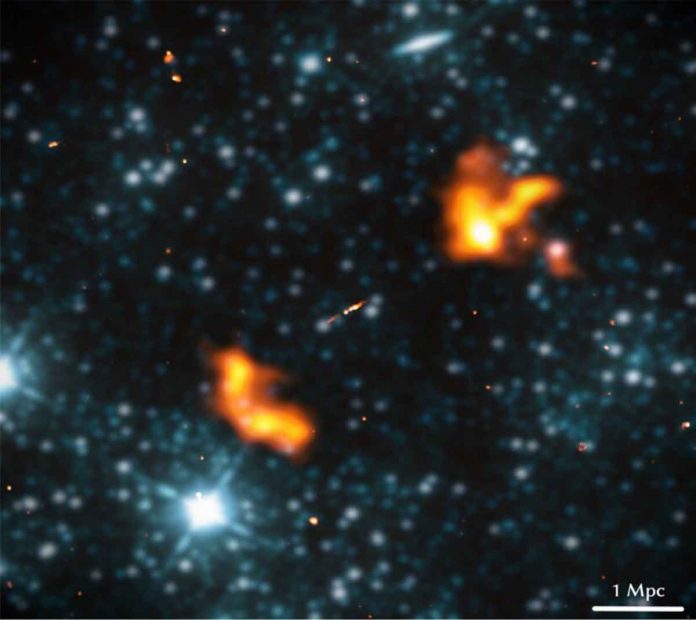Astronomers reported the detection of a new giant radio galaxy. It is a part of the LOFAR Two-meter Sky Survey (LoTSS). Scientists have named the newly found object as Alcyoneus. It is the largest GRG known to date. The study has been published in the arXiv pre-print repository.
GRG are radio galaxies with an overall projected linear length exceedingly at least 2.3 million light years. They are rare objects in low-density environments. GRGs are important for astronomers to study the formation and the evolution of radio sources.
A thousand GRGs have been detected, so far. The largest one is J1420-0545. It has a projected proper length of approximately 16 million light years. GRGs and the rest of the megaparsec-scale radio galaxies are assumed to be the largest single-galaxy–induced phenomena in the universe.
Leiden University astronomers have found a new giant radio galaxy. It appears to be the largest one of the other known GRGs. The finding was made by analyzing the second data release from LoTSS.
Astronomers identified a three-component radio structure. It turned out to be a giant radio galaxy with a central component and two outer components. They dubbed this GRG Alcyoneus. They found that it has a projected proper length of about 16.26 million light years. The true proper length was estimated to be 16.43 million light years. It has made it the largest known structure made by a single galaxy.
Alcyoneus has a total luminosity density at 144 MHz of some 80 YW/Hz. It is typical for giant radio galaxies. The host of this GRG is the elliptical galaxy J081421.68+522410.0. It has a stellar mass of approximately 240 billion solar masses. It also has a supermassive black hole mass of about 400 million solar masses. Alcyoneus’ host has a fairly low stellar mass and SMBH mass. Scientists have compared it with other GRG hosts. This suggests, within the GRG population, no strong positive correlation between radio galaxy length and low-frequency radio power, stellar mass or SMBH mass can exist.

